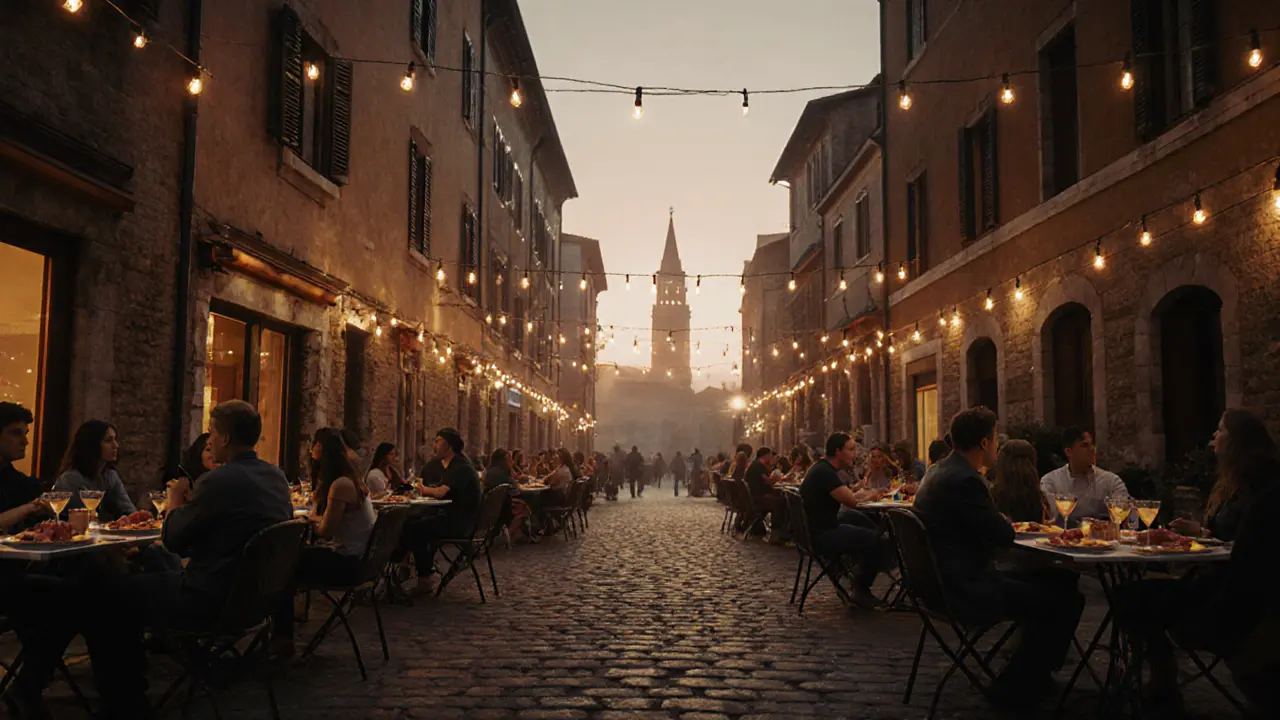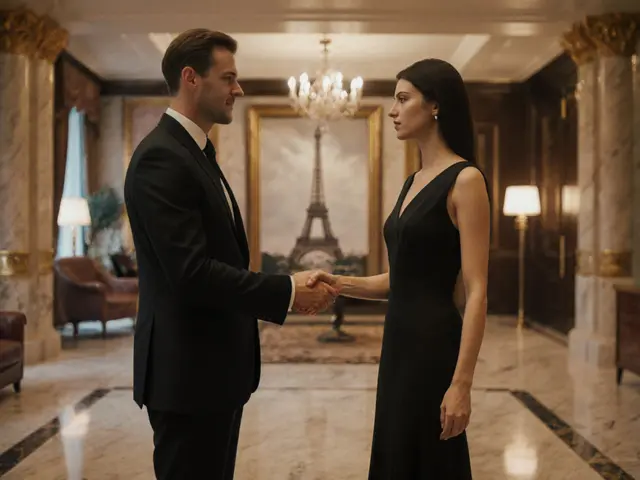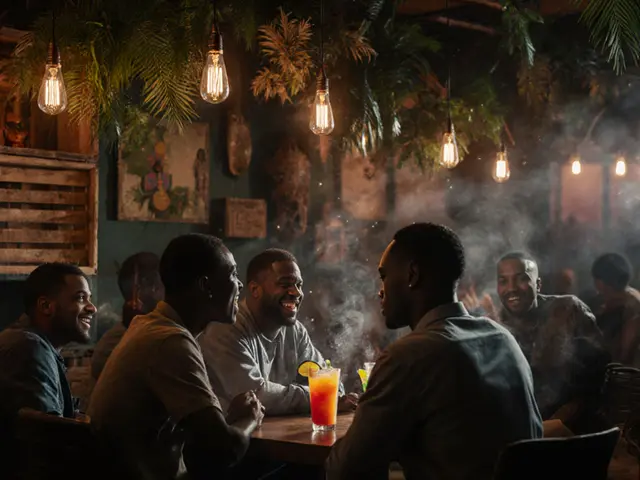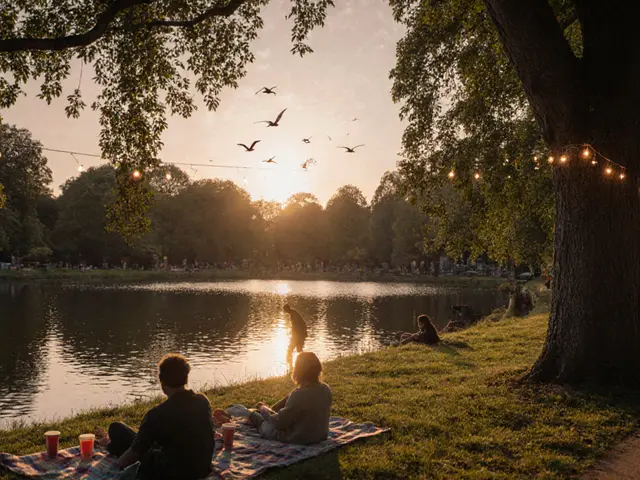When the sun sets in Milan, the city doesn’t sleep-it transforms. Gone are the sleek boutiques and designer showrooms. In their place, dimly lit cocktail lounges, underground jazz spots, and pulsing dance floors take over. This isn’t just a city that knows how to dress well. It knows how to party too. And if you’re looking for the real Milan after dark, you need to know where to go, when to show up, and what to expect.
Brera: Where Art Meets Aperitivo
Start your night in Brera, Milan’s most charming neighborhood. Narrow cobblestone streets, historic buildings, and the scent of espresso and gin make this the perfect place to ease into evening. The aperitivo ritual here isn’t just a drink-it’s an experience. Around 7 PM, locals flood into spots like Bar Basso and La Permanente. You pay €12-€18 for a cocktail, and you get a buffet of cold cuts, cheeses, mini pizzas, and fresh salads. No one rushes you. You linger. You chat. You watch the world go by under string lights.Brera’s nightlife doesn’t explode-it evolves. By 11 PM, the crowd thins slightly, and the mood shifts. Head to Il Baretto for live jazz or Bar Luce, designed by Wes Anderson, for a surreal, cinematic vibe. It’s not loud. It’s not crowded. But it’s unforgettable.
Navigli: Canals, Craft Beer, and Late Nights
Just south of the city center, the Navigli district comes alive after sunset. Once a working canal system for transporting goods, today it’s lined with over 100 bars, restaurants, and music venues. The canals glow under fairy lights, and the air hums with conversation and laughter.This is where locals go to unwind after work. La Baita serves craft beers brewed in Lombardy, while Bar del Fico mixes cocktails with fresh herbs from their rooftop garden. On weekends, the area turns into an open-air party. Street musicians play acoustic sets, and people spill out onto the sidewalks with wine in hand.
If you’re into dancing, don’t miss La Scala del Diavolo, a tiny club tucked under a bridge. It doesn’t look like much from the outside, but inside, it’s all vinyl, neon, and house music that doesn’t quit until 4 AM. No cover charge. No dress code. Just good vibes and a crowd that’s there for the music, not the Instagram shot.
Porta Venezia: The LGBTQ+ Heartbeat of Milan
Milan’s most inclusive nightlife scene thrives in Porta Venezia. This district has been the center of the city’s LGBTQ+ community for decades, and it shows in the energy. You’ll find everything from cozy wine bars to drag shows and techno clubs.Il Giardino Segreto is a hidden gem-a garden bar with mismatched furniture, candlelight, and cocktails named after Italian poets. It’s quiet during the week, but on Friday and Saturday nights, it turns into a queer dance party with DJs spinning everything from disco to deep house.
For something louder, head to Club 18, one of the oldest gay clubs in Italy. It’s not fancy, but it’s authentic. The crowd is mixed-locals, tourists, students, artists. The music shifts every hour, and the dance floor never empties. The bouncers don’t check IDs unless you look under 25. And yes, they know how to make a perfect Negroni.
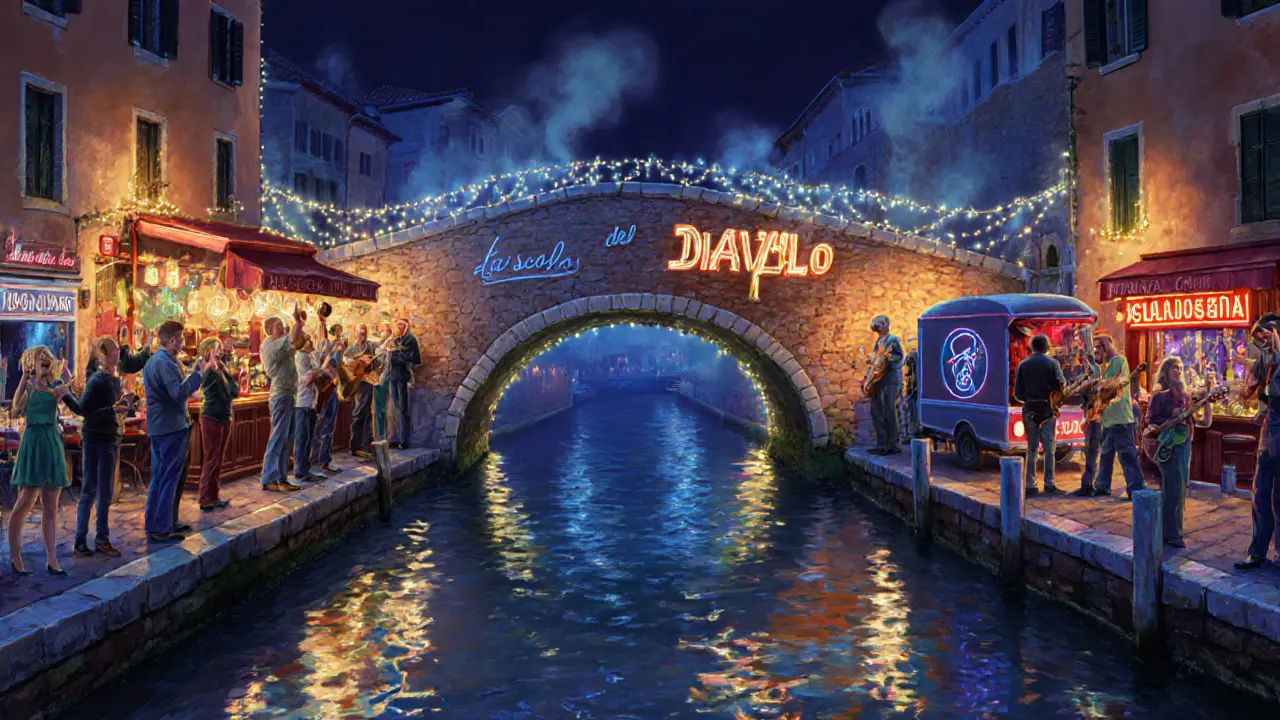
Corso Como: Style, Exclusivity, and the VIP Scene
If you want to see Milan’s high-end nightlife, Corso Como is where the elite go. This isn’t a place for casual drinkers. It’s a destination. The original Corso Como 10 is a cultural hub-part gallery, part bar, part restaurant. The terrace is packed with models, designers, and influencers. You won’t find a menu here. You’ll be handed a glass of champagne on arrival.For a more club-focused experience, Le Jardin is the spot. It’s a rooftop venue with a view of the city skyline and a sound system that rivals Berlin’s best. The music is mostly electronic, but the vibe is relaxed. People dress to impress-think tailored jackets, silk dresses, and designer sneakers. Cover charge is €20-€30, and you’ll need to get there before midnight to avoid the line.
Don’t expect to just walk in and find a seat. This is a place where connections matter. If you don’t know someone, try booking a table in advance. Or better yet, go with someone who does. The door policy is strict, but fair. They’re not rejecting you-they’re protecting the atmosphere.
Isola: The New Frontier for Young Creatives
Once an industrial zone, Isola is now Milan’s most exciting nightlife hotspot for people under 30. It’s raw, unpolished, and full of energy. The warehouses have been turned into bars, record shops, and pop-up clubs that change location every month.Bar Basso Isola (a sister to the original) serves classic cocktails with a twist-think espresso-infused gin or lavender syrup in a negroni. Nearby, Spazio 48 hosts live bands, poetry readings, and vinyl-only dance nights. No DJs. No playlists. Just records spun by local collectors who know every track by heart.
On weekends, the area turns into a street festival. Food trucks serve truffle arancini and vegan tiramisu. Kids from the Polytechnic University hang out with artists from the nearby design schools. It’s the kind of place where you’ll meet someone who just launched a sustainable fashion brand or started a podcast about Milanese dialects.
There’s no cover. No dress code. Just authenticity. And if you’re lucky, you’ll catch a secret set by a local techno producer who only plays once a month.
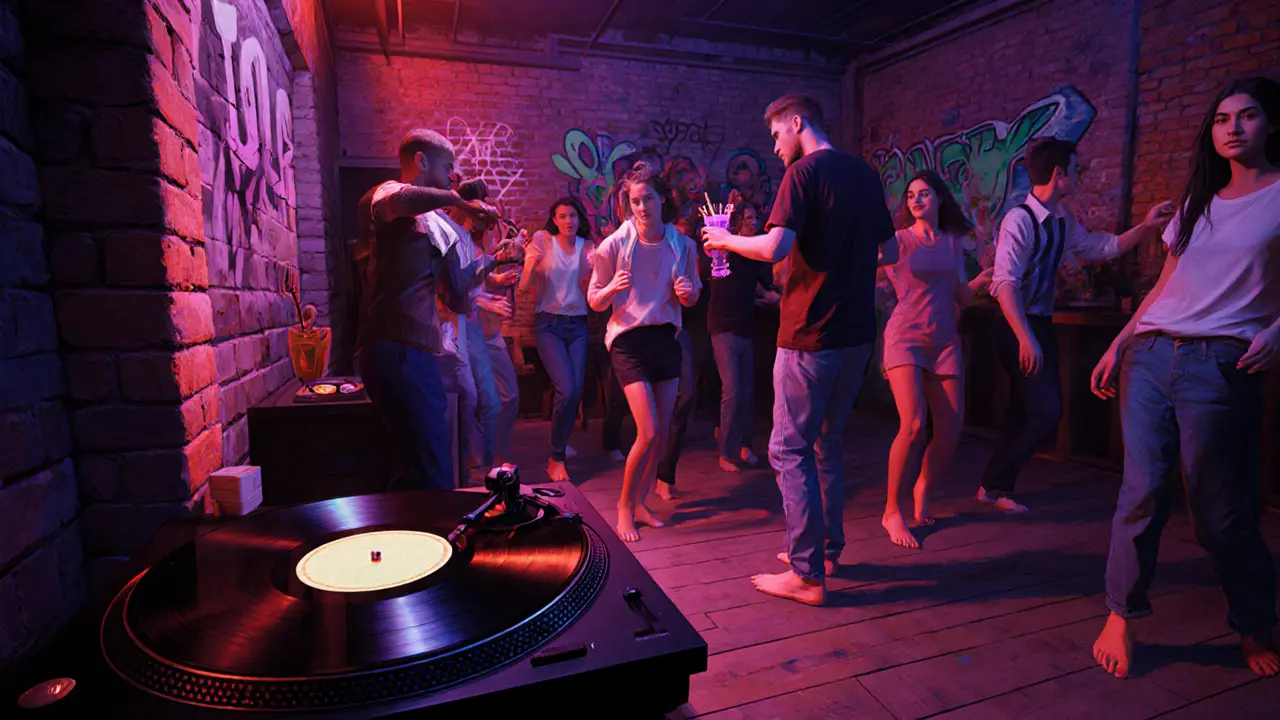
What to Wear, When to Go, and How to Get Around
Milan doesn’t take nightlife lightly. Dressing well matters-even in Isola. You don’t need a suit, but shorts and flip-flops won’t get you past the door at Corso Como or even some of the trendier spots in Navigli. Think clean jeans, a nice shirt, and closed-toe shoes. Women often wear dresses or tailored separates. It’s not about being flashy-it’s about being intentional.Timing is everything. Aperitivo starts at 7 PM. Bars fill up by 9. Clubs don’t really get going until 11:30 PM. Most places stay open until 2 or 3 AM. If you’re heading to a club, arrive after midnight. Show up too early, and you’ll be the only one there.
Public transport runs until 1:30 AM on weekdays and 2:30 AM on weekends. After that, taxis are easy to find, but prices spike. Uber and Bolt work fine, but they’re pricier than in other European cities. Walking is safe in central areas like Brera and Navigli, but avoid isolated streets after 2 AM.
What Not to Do
Don’t expect to find American-style clubs with bottle service and loud EDM. Milan’s nightlife is more about mood than volume. Don’t walk into a bar in Brera and ask for a “Bud Light.” They’ll politely nod and hand you a craft beer you’ve never heard of.Don’t assume everyone speaks English. Learn at least three phrases: “Un aperitivo, per favore,” “Quanto costa?,” and “Grazie.” It goes a long way.
And don’t try to party like you’re in Ibiza. Milan’s rhythm is slower. It’s about sipping, talking, dancing just enough, and leaving before you’re tired. The best nights end with a quiet walk under the lights of the Duomo, coffee still warm in your hand.
Final Tip: The Hidden Gem
If you want to experience Milan like a local, skip the tourist traps and head to Bar della Pace in the Porta Romana area. It’s a tiny, unmarked bar with no sign, no website, and no Instagram page. Just a counter, a few stools, and a bartender who’s been pouring drinks here since 1987. Ask for the “Cocktail della Nonna”-a secret recipe of grappa, orange peel, and honey. It’s not on the menu. You have to know to ask. And if you do, you’ll leave with more than a drink. You’ll leave with a story.What time do clubs in Milan usually open?
Most clubs in Milan don’t really get busy until after 11:30 PM. Some open earlier, but the real energy starts around midnight. If you arrive before 11 PM, you’ll likely be one of the only people there. For the best vibe, plan to show up between midnight and 1 AM.
Is Milan nightlife safe at night?
Yes, Milan’s main nightlife areas-Brera, Navigli, Porta Venezia, and Isola-are generally safe. Stick to well-lit streets and avoid isolated alleys after 2 AM. As in any big city, watch your belongings, especially in crowded bars. Taxis and ride-sharing apps are reliable after public transport stops running.
Do I need to make reservations for bars in Milan?
For most casual bars and aperitivo spots, no. But for popular venues like Corso Como 10, Le Jardin, or any club with a cover charge, booking ahead helps. Some places allow online reservations through their websites. If you’re going with a group of more than four, it’s smart to call ahead-even if it’s just to ask if they have space.
What’s the average cost of a night out in Milan?
Aperitivo costs €12-€18 and includes food. A cocktail at a trendy bar runs €14-€18. Club cover charges are €15-€30. If you’re drinking and eating all night, budget €50-€80. You can keep it cheaper by sticking to local spots in Isola or Navigli, where drinks start at €8.
Are there any dress codes in Milan nightclubs?
Yes, especially in upscale areas like Corso Como. No shorts, flip-flops, or sportswear. Men should wear jeans or chinos with a button-down or polo. Women often wear dresses, skirts, or tailored pants. In Isola and Navigli, it’s more relaxed-clean, stylish casual is fine. When in doubt, dress better than you think you need to.
Can I find English-speaking staff in Milan’s bars?
In tourist-heavy areas like Brera and Navigli, yes. Most bartenders speak basic English. But in local spots like Bar della Pace or underground clubs in Isola, staff might speak little to no English. Learning a few Italian phrases goes a long way. It’s not just polite-it makes the experience better.
